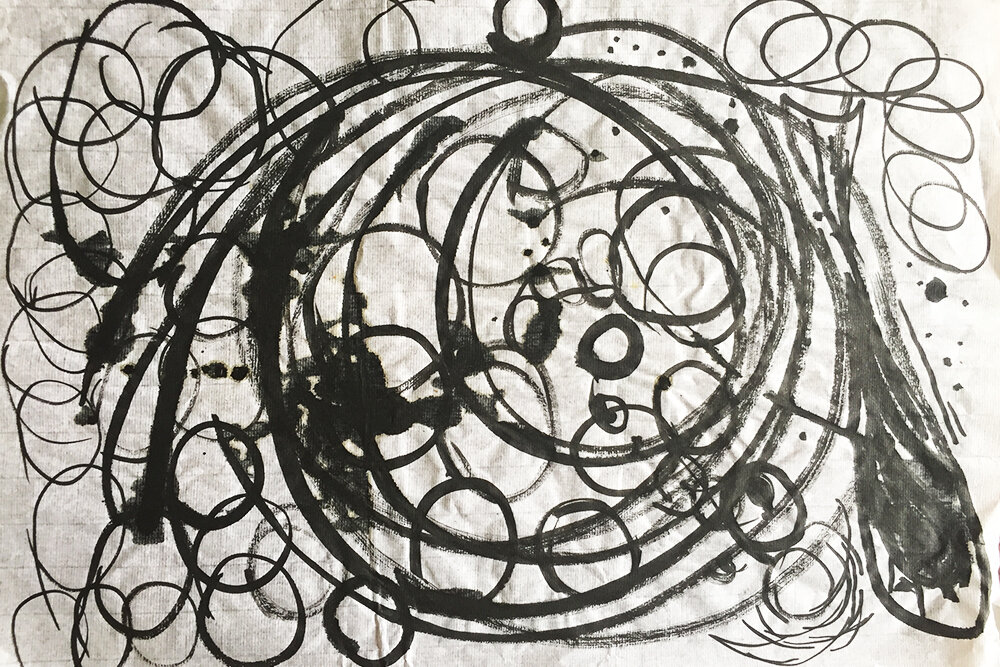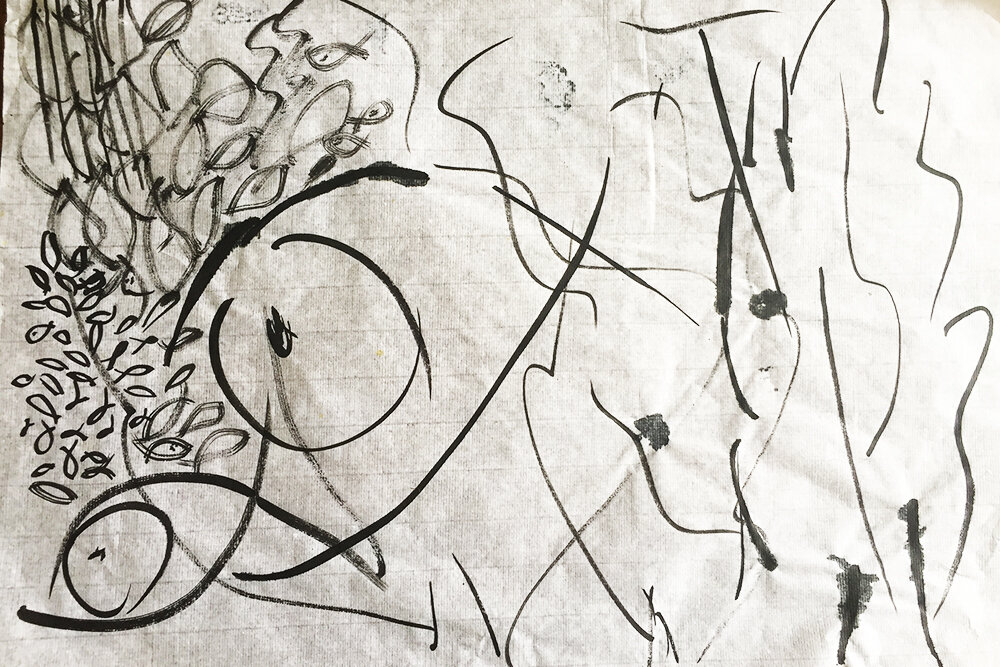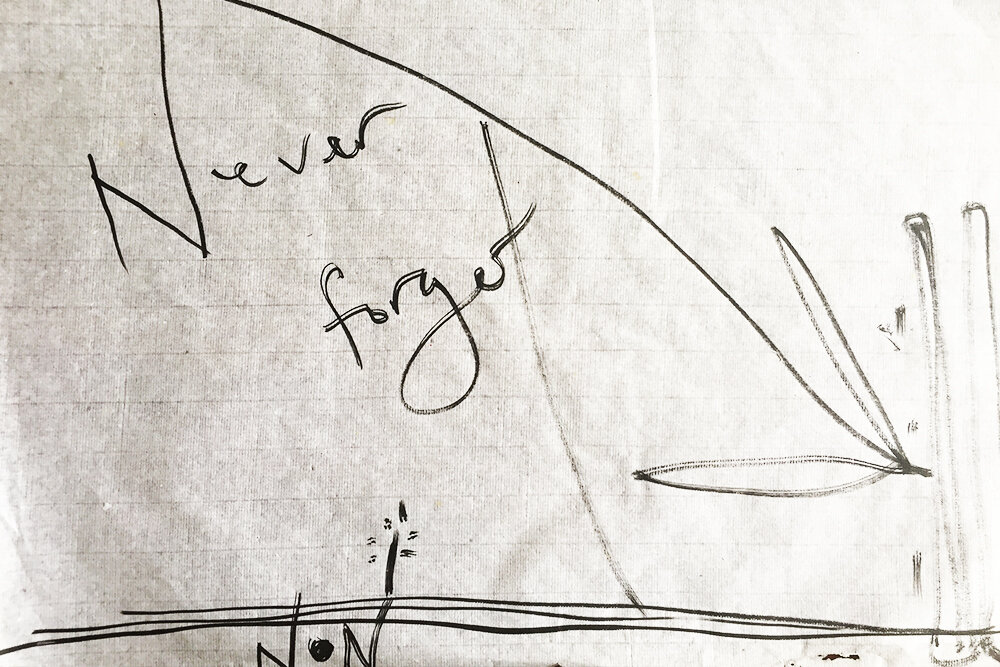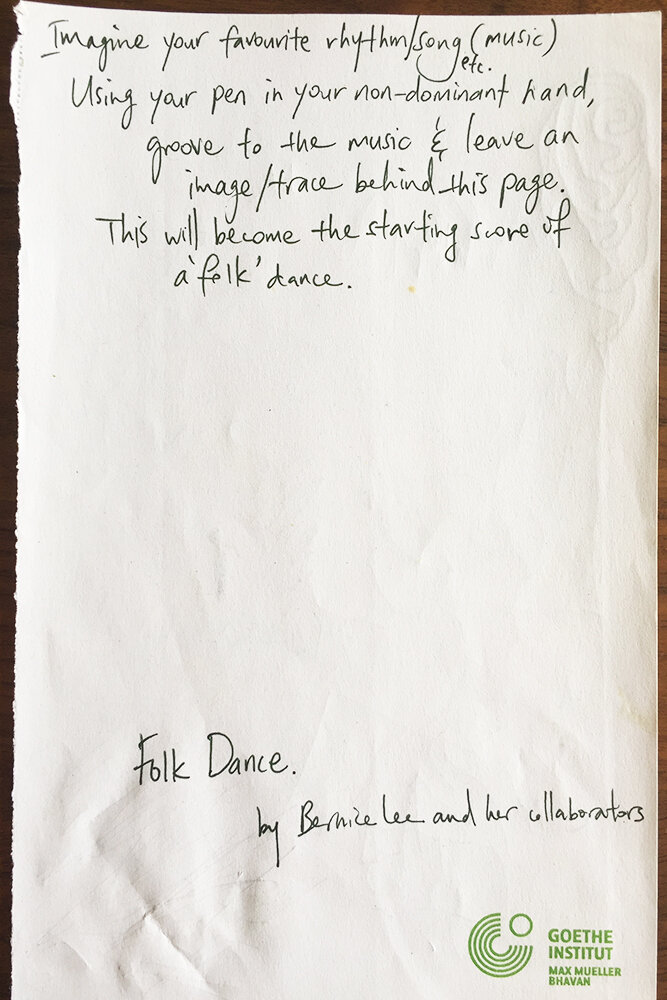TALKING TO MYSELF: A NON-LINEAR, WANDERING (FOLK?) DANCE FOR THE PAGE
Bernice Lee
A poem I wrote sometime in 2017, then edited in 2019 as song lyrics without a melody. You are welcome to write a melody for it. If you do, please share it with me; I would love to listen.
Better Half Better
I am an island
I love you with all my heart
I am a burden
I am a lady
I kiss you then give you grief
You should hold my peace
Who’s your better half?
Who’s your better half?
Who’s been better half?
You are made of flesh
The wrath of my weaponry
Will melt your coal heart
I am your hater (Who’s your better half?)
I’ll look deep into your soul (Who’s your better other half?)
We cannot help it (Who’s the better half?)
I’ll be your fighter
I’ll be unconditional
You are my mountain
Who’s a better half?
Who’s half better than a half?
Who’s better than half?
I am a burden
I love you with all my heart
It is not enough
The syllabic structure and tone come from the haiku. I thought haiku were what I was writing, but then a quick internet search told me that these might be more like senryu, which are about human foibles and ironies, and are humorous or cynical. Haiku deals with nature: the non-human, geological kind.
In November 2018, news spread on international media about an uninhabited Japanese island that disappeared without anyone noticing. Esanbe Hanakita Kojima was named in 2014, and gave Japan a little extra territory; its disappearance would mean a slight shrinkage of their space. Land and water have their own activities, as humans draw and redraw national boundaries. The earth makes its own adjustments for life. On navigation systems, the island is recorded as an underwater reef.
I have never been to Japan, but my plus one/ life partner has visited multiple times, so I feel irrationally connected to the idea of Japan. I wrote this poem while getting used to the idea of marriage. A modern woman, an ancient rite of passage. A contested institution.
My other personal association to Japan is my grandmother talking about World War II planes flying over her hometown/village in China. I imagine the jets zipping over her family’s siheyuan, merely half a generation after the end of foot-binding practices in China.
Am I allowed to juxtapose these stories?
Is it juxtaposition if it is lived experience?
Is anybody listening?
*
18 May 2019, I attend a conversation hosted by Exactly Foundation’s founder, Li Li Chung. It’s held in a home filled with art objects, and open to an invited group of strangers. The artist commissioned to create a work is Seelan Palay, around the theme of inequality. We pass around the pictures he has brought, from his family, and the images he had been commissioned to make, which talk about racial inequality and class-based divides. In attendance are citizens who participate in trying to create a more equitable world in various ways— social action, work in the arts, journalism. Central to Seelan’s work I Remember It All (he quotes his mom) is his lived experience of Singapore as a Tamil minority from a low-income family. His stories are intense and disturbing. The images are juxtaposed against specific quotes from Singapore’s deeply-respected leader, the late Lee Kuan Yew. These quotes underscore the eugenicist leanings of the man— and I feel so uncomfortable listening to the racist undertones of eugenics, in which certain traits were wrongfully essentialised as ‘genetic’, tied to certain ethnicities. The words surely cannot hold water today. They highlight the fact that this powerful leader’s flawed theories led to words and actions— powerful words that can directly impact a child’s well-being. I sit almost paralysed, thinking about the privilege I have had because I lived in the right neighbourhood, had the right skin colour, and did well on exams as a child. I think about my childhood friend, the powerful man’s grandson. I feel like a ghost; all these stories, this web of life, these structures forming and collapsing around me.
How did you come to be where you are today?
What is the dance of the universe that made the ‘you’ that you know as you?
15 June 2019, I host a conversation at my home about inequality, as requested by Li Li as a practice of sharing art and critical discourse. Home is also where I’ve been performing/ recording #ghosting videos using #dancedomestically to reference the habit of seeing the dance as female, or of seeing the domestic space as the female realm. My friends and acquaintances, their plus ones, have a warm conversation about the role of the state in organising human lives. Homelessness. History. Prejudice. Race. Class. We talk about childhood trauma. I perform host, not extremely well.
Here is a sun salutation
Here is a series of actions
Here is a flow in a green skirt
Here is a person sharing herself dancing at home even though nobody asked for it
Here is a person wondering about the dialogue between her house plant and her skirt
Here is a person typing with her hands green from painting someone else’s foot
I posted part of this video on Instagram, and received an emoticon comment from my college mentor and professor Norah Zuniga-Shaw. She is the woman who introduced me to dance and technology. As a student I had the chance to work on the project Synchronous Objects she was co-directing— which placed the choreography One Flat Thing, reproduced (2000) by William Forsythe at its centre— and the language we used around that project has shaped the way I think and talk about dance now. GIFs, stickers and emoticons also shape the way I think and talk now.
28 June 2019, I am invited to show something at Wuwei Performance Art Series. Seelan Palay happens to be part of the curatorial team. I go to a stranger’s home, and do a non-performance performance for a group of strangers I don’t know. In the invitation to perform, I was asked to respond to the notion of having a dialogue, or avoiding one, without being restricted to language. I was invited to perform because I make and share #ghosting videos of myself #dancingdomestically at home, sometimes talking about my lived experiences, sometimes making broader, perhaps obtuse, observations about being a married woman, working as an artist. Here is part of the prompt I was given:
Wuwei Performance Series 3 explores the dynamics of dialoguing through performance in order to find intersections. These intersections are not made but facilitated by the law of nature. However, the law of nature is far from natural, for human behaviour is predicated on “some kind of standard of behaviour which he expects the other man to know about” (Lewis 1997)
In my non-performance performance, I fail to communicate with people via Instagram while we sit together staring at a projection. We sit in wonderful, awkward, silence. I massage someone’s feet with green paint. It feels like existential intimacy, a dance of sitting together. Waiting for something to happen. Maybe it’s enough to just be together. We don’t know much about each other, but here is a group of people willing to spend time on performance art. Maybe a friend brought you.
*
5 July 2019, I go to see Both Sides Now by DramaBox, a project that has run for several years. The theatre project is all about living well and dying well. I go to see the performances and exhibits with my parents. We are emotional and vulnerable. It is also wonderful to chat about my late grandfather.
7 July 2019, my cousin and her young children are visiting from out of town; we visit grandma. They leave for the zoo. I talk to grandma, both of us in slightly halting Mandarin. I learn that my grandparents almost migrated to Africa (South Africa?), for work. But my grandfather refused the longer working hours, and returned to Hong Kong, then Singapore, instead. This must be where my unionist/workers’ rights instincts come from. In my heart, I enjoy a dry laugh over the idea of having decent working hours. 8 hours a day - a pipe dream, I think, in our late-stage capitalist world. Ha!
My grandmother started working as a teenager. She escaped civil war and chose a life in which she could earn her keep, care for her family. Now she enjoys great grandchildren, who are also dispersed in the world, as parts of larger, complicated, migration patterns in the world. I am now related by marriage or by genetic material to people living in and/or hailing from: Malta, England, France, Pakistan, Thailand and Hong Kong. Some of these are locales with a particularly challenging political present. We don’t really talk about it as a family, except to ask if people are safe. Most of the time, most people want to live quiet lives, I imagine. But sometimes we don’t have a choice, when chaos comes knocking.
What a privilege it is, to be able to not talk about wider political strife.
February 2019, I wrote this for Indent to know what I’m thinking: In my postcolonial Singapore, there is no folk dance, only dances that people do. Even “folk” is rarely used as a word in the everyday. When children or communities perform folk dance, it is always with the sense that the dance came from elsewhere, is part of a diaspora and pattern of migration. I do not know the dance of this island’s indigenous people.
My folks (meaning parents/family) don’t dance — except, when I was a child, the elephant dance in my grandparents’ house with a whole bunch of cousins. It makes absolutely no sense, and we used to do it for long stretches of time, probably driving the grown-ups crazy. “One elephant, began to dance, up on a spider’s web one day. He had such enormous fun that he called for another elephant to come.”
Who made this up? Where does it come from?
A group accumulates.
A herd of elephants.
My tribe.
It is a tribe where I can ask if you want to join. Do you want to join me? Do you want to dance on this spider web? Will you be my friend and shall we dance together?
But besides the elephant dance, my dancing has almost always been taught and learnt in order to be performed, to be seen, and often to be represented. Otherwise, we were improvising, or making up our own moves. Free from labels, only to be replaced with this new one: “modern”. Or, “contemporary”. What is the dance in a body like that? What about the feeling that, as a Singaporean, I’m often living in a time in the future? That I delay the present for some future possibility?
(In Singapore, I have gotten used to seeing everywhere— new properties promising to be a great investment and a piece of paradise on earth. Insurance products telling us to save for retirement. Financial plans dangling the carrot of a beautiful island holiday elsewhere in the future, because we are prudent now.)
*
20 July 2019, I perform the solo Ghosting: Indelible in The Hippocampus in Singapore, further developed from the solo I performed at Indent 2018. In this version, I bring my laptop on stage. I hold up messages on paper. I remove my contact lenses and put on glasses. I pick up my fallen hair. I still let different movement tensions possess my body. I still try to indulge in the monstrous feminine trope. I still dance in silence, with the air around me.
30 July 2019, there is news about a satirical rap video talking about race. Preetipls, a musician and social media artist, responds to a racist advertisement with humour that some people find offensive. Just 10 days before Singapore’s National Day, this satirist set off a huge national discussion on race, taking place online, in the newspapers, with politicians, activists and artists making statements. It is exhausting but entirely necessary to be talking about racial justice and equality. It’s a national project. It takes work. People get passionate— identities and meanings are tangled up together with emotions. But this is work we must do, surely.
National Day in Singapore is that annual island event in which loud jet planes fly overhead and guns go off, plus people gather and wear red to remind ourselves of an identity that has been created, that we have claimed.
The decibel levels of jet planes are always terrible.
Is violence the cost of asserting peace?
My hands were stained green so that I could massage someone’s feet green. We sat quietly. People watched. We talked about the colour, its meaning. How meaning is made. Is meaning made?
*
30 August 2019
I write this.
Feminism gave us the mantra “the personal is the political”; this has also been reversed— “the political is personal”. I think a lot about the gap between how I feel and how I am perceived. Who I am and how dancing has stretched my sense of self. As a performer, I sometimes take on representational roles— and in the multiracial, multicultural, pluralistic place that Singapore is (but actually, everywhere is pluralistic, it’s just whether we remember it or not), dancing culture is part of re-enacting and reminding us about differentiation and history. We go to schools or public spaces to dance. Sometimes I get my face done up, my eyes drawn like an Indian dancer. Sometimes I dress up in Chinese Dance costumery. When I perform like this, am I helping to create or re-invent culture based on the ghosts of our past, and do I entrench the old labels and habits, even when we question and deconstruct?
In my own family the labels and cultural experiences of nationality and race are not singular. We have influences from everywhere. The generic labels for culture will fail us. What is the global present? Is there one present? Are we all living in different realities? That must be true, since we, at the very least, live in different timezones.
The earth is round, and we rotate around the sun.
This trouble and strife (also cockney slang for wife)— why do we do it to each other?
*
At INDENT last year, we passed around pieces of paper. On mine, we created a group performance score for a new kind of folk dance. The title of the work was “Folk Dance”.
Am I allowed? Is my urbanite, migratory, modern, privileged body even capable of folk dance? The kind of dance that connects me with history, with futurity, with the collective? What is your dance today, and can we share it? If we share it and reshare it and reshare it, does it eventually become a folk dance?
Can a folk dance be invented by people of the 21st century, who live on an island, but who also come from elsewhere and often go elsewhere? Some people live here for only a short while, and others have been here for generations. How do we meet each other in a shared dance?
This is the process of making my ‘Folk Dance’:
‘Folk Dance’ came out of me wanting to dance with others. To find ways that we can dance together in our own ways. It is not so different from any group dance score, except to say that most group dance scores I am aware of have unspoken aesthetic rules shaped by dance forms. When I worked on Ghosting, I was trying to find a starting point, to give myself permission to shift between all of the ways I know how to dance in any solo performance -- martial arts, postmodern release techniques, bharatanatyam, ballet and so on— with their different codifications and affectations. With ‘Folk Dance’, I thought perhaps a group could start with shared non-dominance, playful grooving, small impulses. But we can always break into our formal movement training patterns, whether it’s gymnastics or knitting or breathing methods.
An old school friend asked me what ghosting is. This is what I wrote to him on Facebook. I have no idea how many people read it, and who has read it. My friend did not watch my show live.
Ghosting is:
A choreographic methodology
An improvised solo work
A word I use for the state of being I find myself in, much of the time, in which my body feels transparent, holds the past/present/future in ambivalent tension, and imagines a way of stepping into memory, inter-generational trauma and identity conflicts, to solidify into action, image, kinaesthetic quality.
A term with an urban dictionary definition: unintentional link but a very important one.
Reference to spirituality in dance, from a privileged Singaporean Chinese position.
Paying attention to the invisible, unknown, to blind spots.
One of the things I don’t say to this friend is that the very first impetus for ‘ghosting’ was when I thought about my dancing and artist life as work, and how I can try to mirror the wildly indecent working hours of my plus one slash life partner slash better half. By practicing a way of dancing that isn’t tied to form but to ideas, something quite intangible and unfixed, the dance of my inner self feels like it gets more and more of the attention it needs. Working late into the night is common practice, and so is dancing, after all.
*
My artmaking and everyday life have blended together in ways I would never have predicted. When I make short public videos with captions, people from different compartments of my life respond. There is a different air of familiarity when we meet in person. I feel very much like a millennial (the oldest millennial, apparently) who has multiple conversations on multiple platforms with multiple people spanning multiple moods. This is our dance of today. There is a lot going on, just like within my body. There is always a ton of action. My blood flows, my involuntary muscles flex, my hormones flood my systems. My kidneys function. Are these all part of one body?
Bernice Lee is an artist based in Singapore. #ghosting can be seen and shared on occasion via Instagram: @bleelly. If it starts to accumulate, might it become #folkdance?






